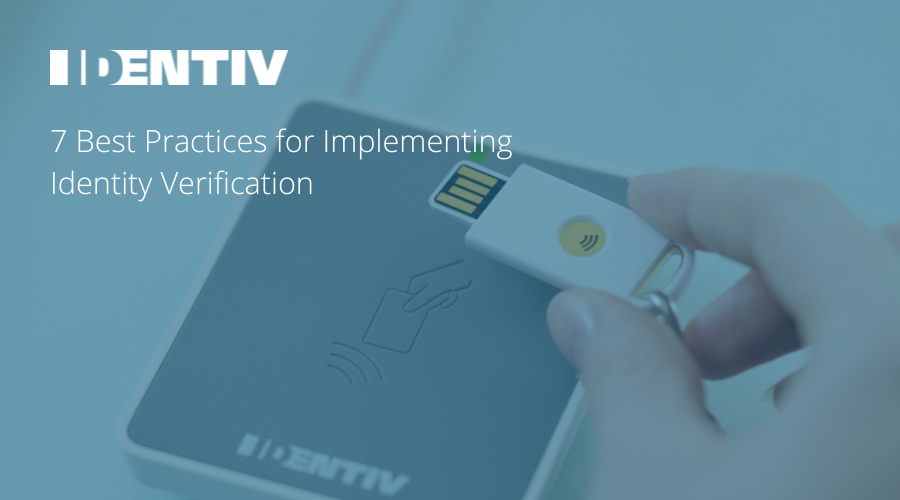
7 Best Practices for Implementing Identity Verification
March 20, 2023, Identiv
Here are some best practices for implementing identity verification:
- Use multiple verification methods: Implementing different verification methods can increase the security of the verification process. Some common verification methods include email verification, phone verification, document verification, and biometric verification.
- Keep user data secure: It is essential to ensure that user data is stored securely and is protected from unauthorized access. This can be achieved by implementing encryption, access controls, and regular security audits.
- Clearly communicate the verification process: It is important to clearly communicate the verification process to users, including the types of information that will be collected and how it will be used. This can help build trust and increase user engagement.
- Use machine learning: Machine learning algorithms can help identify fraudulent behavior and patterns in user data. By using machine learning, businesses can automate the verification process and reduce the risk of human error.
- Stay up to date with regulations: Identity verification is subject to various regulations, such as Know Your Customer (KYC) and Anti-Money Laundering (AML) laws. It is important to stay up to date with these regulations and ensure that the verification process complies with them.
- Provide support to users: Implementing identity verification can sometimes be a complex process for users. Providing support and assistance to users can help them complete the verification process and increase their trust in the business.
- Continuously improve the verification process: Identity verification is an ongoing process, and it is important to continuously evaluate and improve the verification process. This can involve analyzing user feedback, monitoring the effectiveness of verification methods, and implementing new technologies and methods.
Implementing identity verification can help businesses increase security, prevent fraud, and comply with regulations. By following these best practices, businesses can ensure that the verification process is effective, efficient, and user-friendly.
